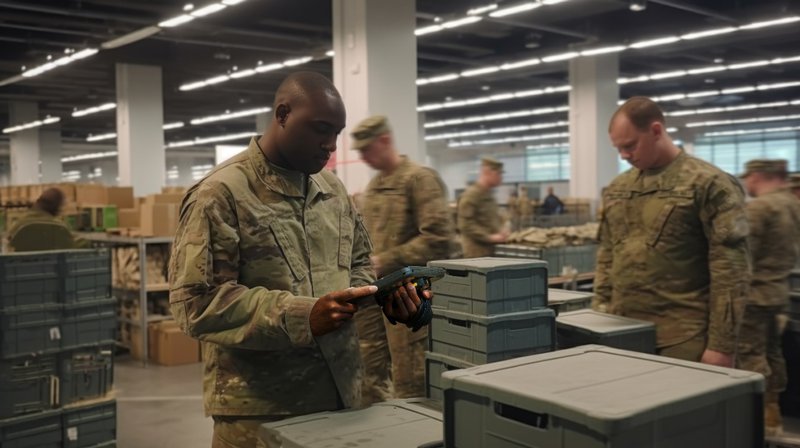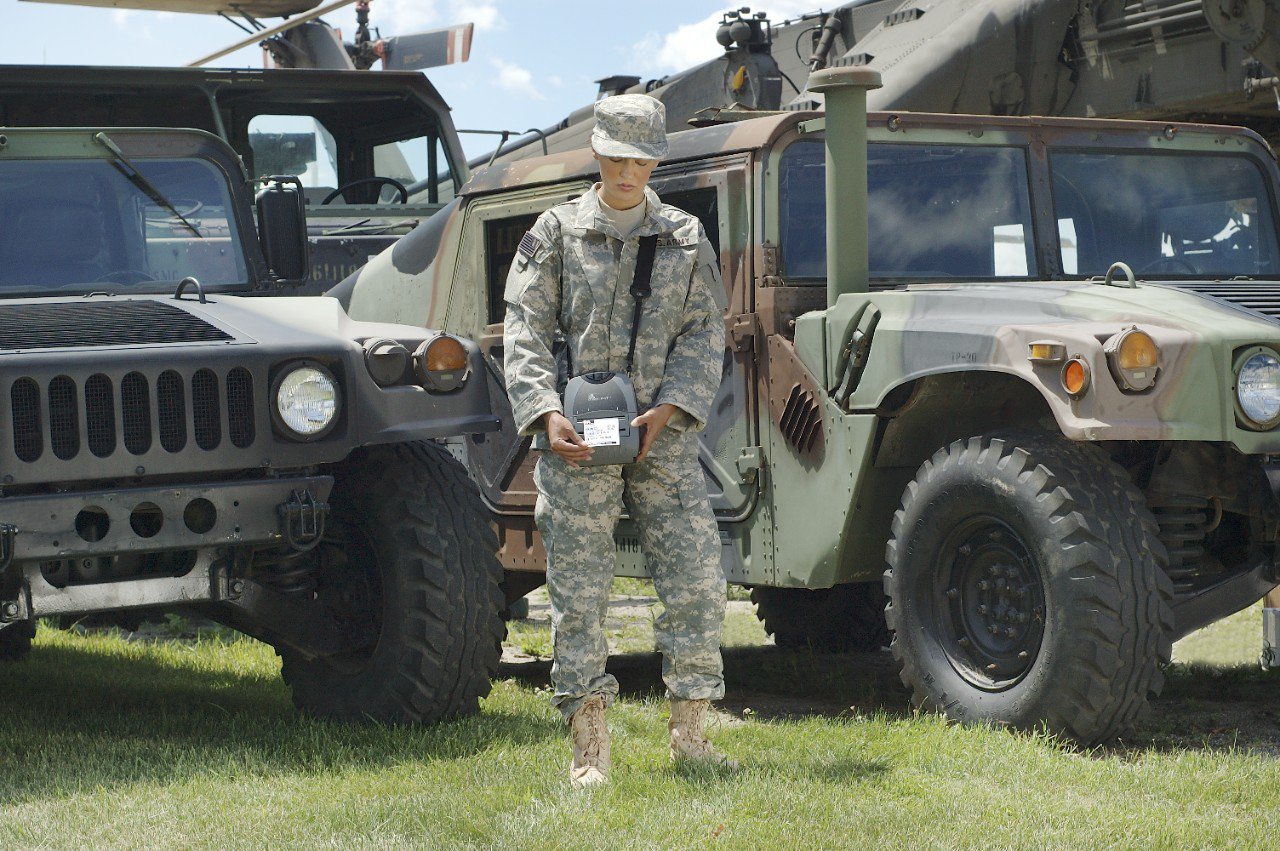Data-driven maintenance is coming to defence forces worldwide – and fast.
The US Military’s Condition-Based Maintenance Plus programme and the UK government’s Data Strategy for Defence reveal a strong appetite for data-led innovation.
We’ve covered many of the wider, organisational benefits of data-driven maintenance in another post. For this article, we’re going to look at data-driven maintenance at the business end – as an engineer or mechanic undertakes a repair.
We’ll show that data-led strategies can revolutionise how crews tackle jobs – bringing huge efficiency savings. We’ll also reveal that carefully choosing the right rugged phone or tablet will be crucial to the success of this fundamental shift in working practices.
What’s wrong with traditional data practices at the site of repair?
Data suggests that wrench time – the period a technician is actually engaged in maintenance – can be as little as 25-35%. In other words, workers lose 65%-75% of their time to other activities.
One of the most common and notorious time-wasters in both the military and other industries is the double handling of data-gathering. In this sub-optimal set-up, technicians record data as written notes at the site of repair and then copy it up again back at the office.
In one example, protocol required pilots to keep hand-written records of defects in a log that was stored in each aircraft. They or a colleague then copied these notes into a duplicate log at the base. Finally, personnel created a job card for each maintenance task. That’s three layers of reporting!
Bear in mind, inefficient data gathering can also apply to parts ordering. And a maintenance crew without the right parts is a recipe for more lost wrench time.
Another issue is the use of hard-copy manuals for repairs. Despatching them to the site of repair can cause delays; worse, if a manual isn’t available, crews may be forced to postpone jobs or undertake work without the necessary guidance.
More generally, evidence suggests that maintenance crews are often insufficiently supported. For instance, augmented reality software company Taqtile examined jet engine maintenance in the US Air Force. Remote deployment meant that under-qualified technicians often undertook repairs. Without appropriate support, they were unable to complete a third of tasks and had a 60 per cent error rate. (Yes, 60 per cent.)
Why data-driven solutions at the repair site are the solution
The right rugged smartphone or tablet can become a versatile tool at the site of repair, providing solutions to all of the problems described above.
Here’s some of the benefits:
Faster data gathering
Above, we gave an example of a time-intensive, ‘triple-handling’ work-logging process. Now we’ll compare that to a methodology deploying a rugged device for data entry.
Let’s take undertaking compliance checks as an example. First, the engineer fills out fields in a compliance form in their device as they examine the vehicle. They can even scan barcodes on parts or take photos. This can speed up the process and provide more information. It also improves accuracy – military maintenance systems are massive and making sure the right maintenance is recorded against the right equipment or part is crucial.
On completion, this data uploads and is available to appropriate users at the click of a button. No more double (or triple) handling. Just data inputted once, and instantly available.
Instant and intelligent parts ordering
Similarly, technicians can request parts instantly, at the site of work – no more trudging back to an office to fill out forms or type data into a desktop PC. Operations teams can then efficiently prioritise parts based on job urgency and swiftly dispatch them to technicians or prepare them for warehouse collection, streamlining procedures.

Digital manuals and next-gen instructional content
Mobile devices can hold – or gain fast access to – the right maintenance manual or work instructions in seconds. So, if a piece of kit is being repaired in a hangar or even in the field, there’s no need to carry around unwieldy guides. Using a rugged device, everything can be available for reference instantly at the point of work.
Meanwhile, in the case of complex equipment issues from third-party providers, technicians can use their devices to directly contact support while they are on-site.
Finally, augmented reality (AR) is an emerging technology that will revolutionise instruction-led repairs. In the Taqtile study referenced above, jet engine technicians using traditional methods had a high error rate and left many tasks incomplete. Using AR headsets, they completed all of the tasks with no errors.
Defence forces will roll out this technology in the years ahead. According to the journal Washington Technology, as of August 2023 the US Army was in the early stages of creating a multiple-award contract to acquire AR and VR systems for training mechanics working with tanks and armoured vehicles.
The role of AI and machine learning
Data gathering and accessing vital information –instantly – at the site of work is a time-saver. However, the even bigger story is the vast data sets gathered as a result of this new, centralised method of recording information.
AI and machine learning can analyse this data and isolate areas for increased efficiency and better ways of working. Here’s one example: studying ordering patterns, AI can accurately predict which parts will be needed and when. This can help to optimise warehouse space and ensure parts are ready to go when required.
What devices do I need for data-driven maintenance?
In our experience working with defence forces, we suggest the following as the core requirements:
- Ruggedness
- Versatility – one device to ‘do it all’
- Connectivity and security
Ruggedness
This refers to the device’s ability to withstand the knocks and shocks of commercial and (in this case) military environments. Areas to look out for include a MIL-STD rating for drops and shocks; the IP (ingress protection rating) for water and particulate ingress; and toughened glass. We’ve written extensively about the rugged factor here.
Versatility
The right mobile computer will provide a compact, lightweight solution for gathering and reading data. Consider investing in devices with ample screen space users can read in bright sunlight, ‘gloved use’ mode, long battery life and ‘hot swap’ replaceable batteries. You should also ensure your provider has an ecosystem of add-ons such as barcode readers or vehicle-mounting options, so you can easily adapt your solution to your circumstances. We consistently recommend mobile devices from Zebra Technologies to our defence forces clients. Zebra provides high-performance, perfect-fit solutions for military environments.
Connectivity and security
Military complexes require tight security and versatile connectivity solutions. Nuffield Technologies has developed its ASP platform to work in conjunction with Zebra devices to provide just that. Features of ASP include:
- Secure OS – disabling unnecessary device features.
- Online or offline – devices can be managed over USB, and systems can be extended for WiFi or mobile data.
- MFA – one device can be shared between many users with appropriate security layers and authentication.
- Extensible – ASP can support customer requirements, such as locking the device when it is outside permitted areas.
In conclusion
Using data correctly at the repair site is a crucial part of rolling out an effective data-driven maintenance programme. This is the ‘business end’ of your strategy, where so many of the benefits will be realised in terms of time and efficiency savings.
Fundamental to realising these benefits is choosing the right rugged devices. To keep operations streamlined and cost-effective, a ‘one device does it all’ solution must be your goal. Providing you choose wisely, that goal – as we hope this article illustrates – is perfectly achievable.
Nuffield Technologies works in partnership with defence organisations to provide perfect-fit rugged tablets and phones. We are accredited with JOSCAR, the highly respected supplier evaluation system for the aerospace, defence and security sectors.

